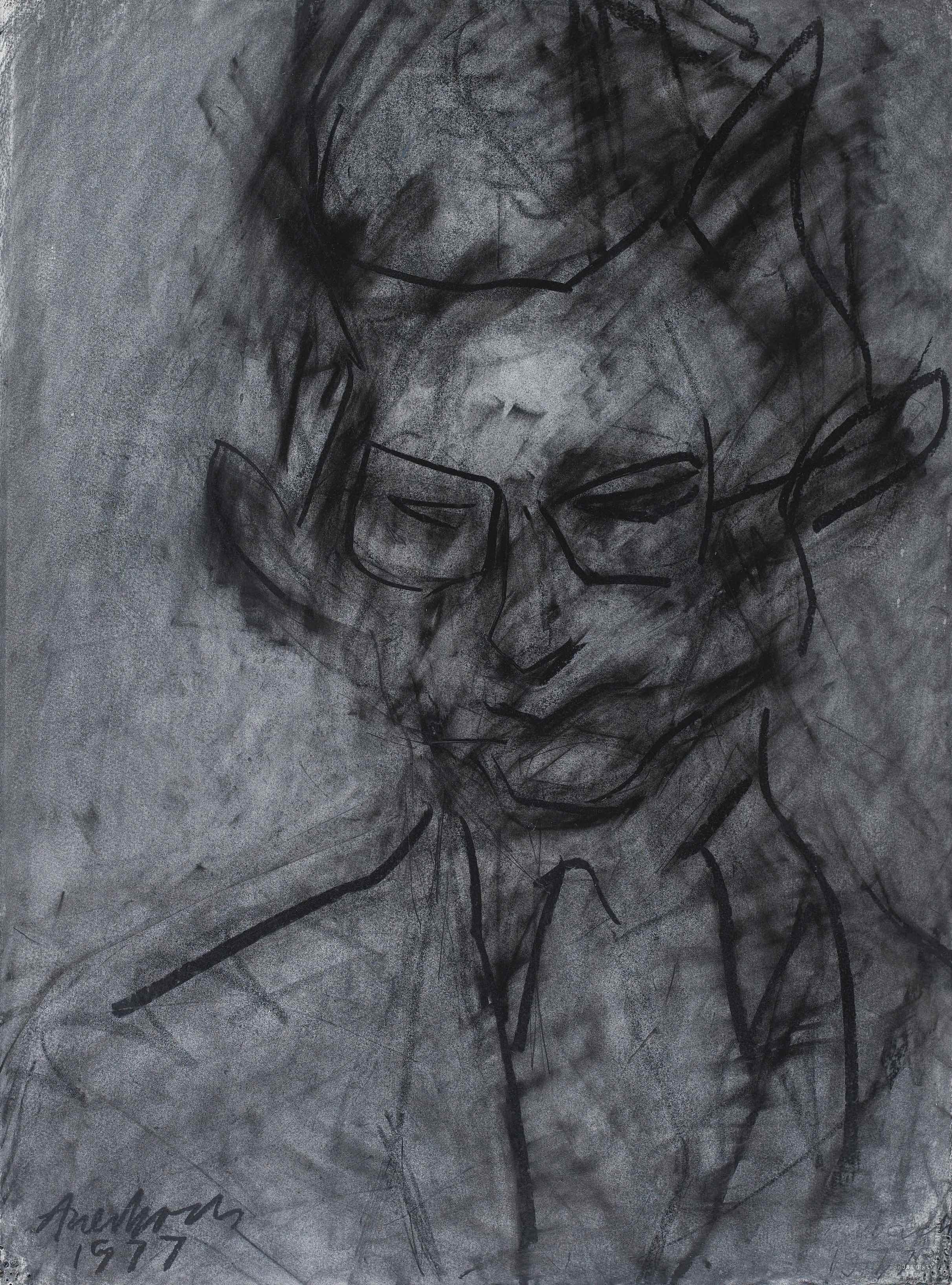Bethan Hamilton: Five artworks that have shaped my practice
Frank Auerbach, Portrait of Christopher Dark, 1977. Image courtesy of Bonhams
PAPER Artist Bethan Hamilton shares the five artworks that have influenced her practice. Read more about her work in Natalie Bradbury’s July 2020 feature about the uses of tarot in contemporary art and support her related Kickstarter campaign here.
***
Nicola Hicks
Crow Man (1995)
Nicola Hicks’ drawing style greatly influenced my own when I was studying at college and university. During my BA and MA, my studio practice was heavily focused on large scale charcoal drawings – portraits, nudes, and what I used to refer to as ‘hybrids’, which were naked female bodies with bird heads (some blatant student art plagiarism on my part!). I just love the fluidity in Hicks’ use of line and tone. Crow Man is tensed and ready to spring from the surface of the paper.
***
Jenny Saville
Reverse (2002-3)
It was difficult to pick a single artwork by Jenny Saville that has had the biggest influence on my practice, but Reverse is a painting that I always find myself coming back to. Fleshy and visceral, I can almost feel the weight of her head on the glass. The colour palette makes the skin seem raw, like skin about to blister after a burn. I have always been very drawn to the skin, fat, curves and dark fleshy folds of the human body. Saville’s work is all about dissecting self-image, which, as a shy young adult, was something that I needed to explore. However, over time my focus has shifted to personal identity, or more specifically – my lack of personal identity after becoming a mother.
***
Frank Auerbach
Portrait of Christopher Dark (1977)
Frank Auerbach’s frenzied use of line and his heavy/smoky use of tone in Portrait of Christopher Dark really appeals to me. He would often furiously wear holes through the paper of his drawings and patch them up with other pieces. My early charcoal drawings would begin as 5ft x 6ft sheets of blank paper, rolled out onto the floor, on which I would crush charcoal under foot and drag it across the surface to map out the rough lines and areas of tone of my subject. This process of mark making was my way of exploring ways in which I could emulate Auerbach’s expressive drawing style.
***
Helen Chadwick
Cacao (1994)
Perhaps not an obvious influence! The Helen Chadwick retrospective that I visited with my college group back in 2004 at Manchester Art Gallery was the first exhibition that truly blew me away and opened my eyes to the limitless possibilities of what art could be. The memory of seeing Chadwick’s Cacao installation exhibited amongst her Wreaths to Pleasure (1992-3) photographic works has stayed with me ever since.
***
Francis Bacon
Studies of George Dyer and Isabel Rawsthorne (1970)
Another artist and artwork that had a very early influence on my artistic practice was Francis Bacon’s Study of George Dyer. I was introduced to Bacon’s work in high school, at the age of 15. Compared to a lot of his other paintings, this portrait has a more subdued colour palette (I’m not often drawn to colourful works of art). But it is the smooth concrete curve of the forehead, brow bone and eye socket in contrast to the vague mangled shapes of a nose, jaw and mouth. Simultaneously grotesque and beautiful.
***
Bethan Hamilton’s work is a deconstruction of female sexuality, identity and body image through mark making. Bethan moved from the UK to Stockholm, Sweden with her partner in 2014 and after just one month she discovered she was pregnant. Her most recent series of self-portrait drawings were made in response to the artist's experiences as a first-time mother throughout the first 3 years of her daughter’s life in Stockholm. An experience heightened by the lack of accessible support from family and friends or the familiar surroundings and comforts of her home country.
Self-portraits that depict the artist’s head slowly disappearing under a viscous blank space, threatening to immerse the sitter entirely. This negative space has become a visual representation of the transformations that occur in both body and mind that accompany pregnancy, childbirth and motherhood. This process brought about a feeling that Bethan’s body was no longer her personal property. For the artist, along with the drastic physical changes of becoming a mother, it also triggered a significant shift in mindset that led her to question her personal identity as a woman and as an individual. Personal wants and needs became trivial and took a backseat to love and care for another human being. Some days struggling to recognise the person staring back at her in the mirror. Eventually coming to the realisation that there would be no return to her “old self” and that a new identity was forming.

